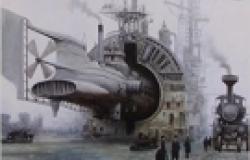Book Review: The Global Transformation: History, Modernity, and the Making of International Relations

The Global Transformation: History, Modernity, and the Making of International Relations by Barry Buzan and George Lawson. Cambridge: Cambridge University Press, 2015. 426 pp, £59.99 hardcover 9781107035577, £19.99 paperback 9781107630802, $24 e-book 9781316236123
In The Global Transformation, Barry Buzan and George Lawson argue that the nineteenth century witnessed a “global transformation”, which was not only “the starting point for international relations”, but also created a series of influential actors, including but not limited to rational nation-states, transnational corporations, inter-governmental and non-governmental organizations. The authors contend that the global transformation was “compressed into a compact time span, with major changes happening on a scale of decades rather than centuries” (p.23), and that since the middle of the nineteenth century, the international order began to operate through a core–periphery structure. Full use is made of world systems theory and the idea of core and periphery, in order to “delineate polities” in accordance with “their relationship to the modern mode of power” (p.10). In this book, the core–periphery international order is characterized by four factors: that is, political-legal, military, economic and demographic.
The book contains three parts: in the first part (Chapters 1-2), the authors explore the fundamental and interlinked aspects of the global transformation in the nineteenth century (i.e., industrialization, rational statehood, and ideologies of progress). They then explain how these three aspects shaped the international order in the nineteenth century. Current literature, in contrast, puts little emphasis on the nineteenth century and its impacts on international relations in the twentieth and twenty-first century. In the opinion of Buzan and Lawson, “the first way that IR approaches the nineteenth century is by ignoring it” (p.48). Alternatively, the nineteenth century is seen as a case study within a broader theoretical argument, or “within a narrative of Western exceptionalism” (p.61).
In Part II (Chapters 3-8), the authors reveal the ideas and conceptions of current IR literature that originate in the nineteenth century, such as globalization, intervention, revolution, capitalism, international society and so on. To a great extent, the authors argue, the global transformation “define(s) modern international relations” (p.55), and is the main determinant of contemporary international order. For instance, many concerns in the nineteenth century established the features of contemporary international relations: the impacts of geopolitics in international order, the emergence of sovereignty and self-determination, and the pros and cons of military technology. At the same time, the global transformation, Buzan and Lawson explain, generated political, military, economic and cultural inequalities within the international order, which continue to define contemporary international relations, and laid the foundation for modern international relations to some degree.
The final part of the book (Chapters 9-10) re-examines the aspects of current IR literature (i.e., power, security, globalization, ideational structure, periodization and history) based on the context of the global transformation in the nineteenth century. For Buzan and Lawson, academics and scholars should pay more attention to the modes of power, rather than power distributions. The core–periphery international order in the nineteenth century was “global in scale, but extremely unequal” (p.176). In other words, “a relatively small group of polities created a Western-colonial international society” (p.195). Historically, although the core–periphery order combined states and peoples on a global scale, it also gave rise to the struggles against imperialism that did much to erode this order (p.138). As a result of these struggles, the power gap between core and periphery will matter less, and the core will expand.
According to Buzan and Lawson, the core–periphery international order has been transforming into a “decentred globalism”, in which regionalism is more prominent, while there is no global hegemony. It is noteworthy that in a world of the decentered globalism, there are many centres of power (e.g., the European Union, the United States, and China). In the foreseeable future, they are “likely to have their local spheres of influence”, which would be “reinforced by cultural and historical differences between regions” (p.302).
On one point Buzan and Lawson’s view can be disputed. They contend that both China and the US “face the difficult task of conducting a mutual de-escalation”, in which “China threatens its neighbours less, and the US threatens China less” (p.303). However, contrary to this view, it can be argued that, as the United States’ involvement in the disputes of the South China Sea shows, the US’s primary concern is not with China being a threat to its neighbours, but with whether China’s increasing influence in the region threatens US interests.
The Global Transformation is a hugely impressive book of great historical scope, which explains how contemporary global modernity came about. With their broad-ranging approach, Buzan and Lawson develop a convincing analytical framework for understanding international relations and the global transformation in the nineteenth century, whose impacts have been extended to the twentieth and twenty-first centuries. The authors make an excellent contribution to the existing literature on international relations and global political transformations, and the book should establish itself as a key text for graduates and undergraduates, appealing across many academic disciplines (particularly international relations and historical sociology).
Kai Chen, Ph.D., is an Assistant Professor at the School of International Relations, Xiamen University, China. His previous positions include post-doctoral fellow at the School of Public Administration, Zhejiang University, China; and post-doctoral fellow at the School of International Relations and Public Affairs, Fudan University, China. He has held visiting appointments at the National University of Singapore, Thammasat University, the Chinese University of Hong Kong and Chengchi University in Taiwan. His research focuses on the nexus of international security, human insecurity and geostrategic relations in the Asia–Pacific, such as child labour, human trafficking and maritime piracy. He is the author of Comparative Study of Child Soldiering on Myanmar-China Border: Evolutions, Challenges and Countermeasures (Singapore and New York: Springer, 2014).


